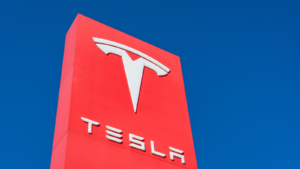4 Electric Vehicle Stocks to Buy After a Deep Correction
Electric vehicle companies poised for robust EVs delivery growth in the coming years
- These are some of the best electric vehicle stocks to buy after a deep correction, as favorable industry tailwinds will support growth.
- Tesla (TSLA): Ambitious plans to sell 20 million EVs annually by 2030.
- Nio (NIO): Aggressive expansion in Europe and the launch of several new models will boost delivery growth.
- Lucid Group (LCID): Deliveries growth will accelerate as supply chain headwinds ease, and new models enter production.
- Polestar Automotive (PSNY): Strong delivery growth is likely to sustain, and widening operating losses are not a concern.
There need to be two billion electric vehicles on the road by 2050 for the world to hit net zero. Currently, there are 5.6 million electric vehicles globally. If the target for 2050 is to be achieved, current EV sales are just the tip of the iceberg. With a deep correction, it’s one of the best times to look at some of the best electric vehicle stocks to buy.
There will be questions on the reasons for the correction when the industry outlook is bright. It includes the supply chain factors, macroeconomic headwinds, and a broader correction in growth stocks. As these headwinds wane, electric vehicle stocks will be poised for a more significant rally.
My opinion there is to buy attractive electric vehicle stocks and hold with patience for multibagger returns. While the industry growth outlook is robust, intense competition implies that investors must be selective. The focus is on EV companies that will survive and grow with investments in research and development.
Tesla (TSLA)

Source: Roschetzky Photography / Shutterstock.com
There is increasing fear and skepticism around Tesla (NASDAQ:TSLA) stock after a correction of 50% for year-to-date 2022. However, TSLA stock has always bounced back stronger, and it’s unlikely to be any different this time.
I believe that Tesla is likely to maintain a leading market share globally. The company is already ahead of its peers, with manufacturing in the United States, Europe, and China. Elon Musk has set an ambitious target of selling 20 million EVs annually by the early 2030s. This will involve the building of 10 to 12 new gigafactories.
This seems entirely likely, considering the company’s financial flexibility. As of Q3 2022, Tesla reported $19.5 billion in cash and equivalents. Additionally, the company delivered an operating cash flow of $11.4 billion for the first nine months of the year.
Tesla also has an attractive line-up of new models. This includes Cybertruck, Roadster, and Tesla Semi. With robust financial flexibility, the company will continue to invest heavily in research and development. This will help Tesla remain the market leader.
Nio (NIO)

Source: Michael Vi / Shutterstock.com
Chinese EV stocks have suffered through 2022 due to coronavirus-driven lockdowns, political and policy uncertainties, and supply chain concerns. For example, Nio (NYSE:NIO) has slipped by 75% in the last 12 months. The correction seems overdone, and I would bet on multibagger returns from Nio stock in the next few years.
In terms of business development, Nio is aggressively expanding in Europe. Last year, Nio entered Norway. For 2022, the company has plans to enter Germany, the Netherlands, Denmark, and Sweden. ET7, EL7, and ET5 will be launched in these countries. International expansion is a key growth catalyst for the coming years.
It’s also worth noting that for Q3 2022, Nio reported a 29.3% growth in vehicle deliveries on a year-on-year basis. Growth has been healthy, considering the economic headwinds. Further, with the launch of multiple new models, delivery growth in China is likely to accelerate in 2023.
With $8.1 billion in cash, Nio also has the robust financial flexibility to invest in aggressive expansion and product development.
Lucid Group (LCID)

Source: Around the World Photos / Shutterstock.com
Lucid Group (NASDAQ:LCID) is another name among electric vehicle stocks to buy around current levels. Even with potential equity dilution, I don’t see a scenario where LCID stock is trading below $10.
Recently, Lucid announced a fundraising of $1.5 billion. With cash and equivalents of $3.85 billion as of Q3 2022, Lucid has ample financial flexibility to invest in growth will into 2024.
From the perspective of delivery growth, the outlook seems to be improving. The company expects to deliver Air Touring and Air Pure later this year. Further, Lucid Air Sapphire production is expected in the first half of 2023. Project Gravity SUV production is guided for 2024. The key point is that Lucid is positioned to accelerate growth with new models and as supply chain concerns ease.
Lucid has also grabbed headlines when it comes to the innovation edge. For example, Lucid Air Dream Edition remains the world’s longest-range production car, while Lucid Air Sapphire is considered the world’s most powerful sedan. Moreover, the innovation factor will help Lucid increase its market share in the coming years.
Polestar Automotive (PSNY)

Source: Robert Way / Shutterstock.com
From a valuation perspective, Polestar Automotive (NASDAQ:PSNY) looks attractive below $5. With healthy delivery growth likely to sustain, PSNY is poised for a sharp reversal once sentiments turn positive.
For the first nine months of 2022, Polestar has delivered 30,400 cars, a growth of 100% on a year-on-year basis. Further, the company has reaffirmed its guidance to deliver 50,000 cars for the year. In October, the company also unveiled Polestar 3. The new model is likely to support delivery growth in 2023. Therefore, the outlook is bright on the delivery front.
The first reason for a deep correction is broad industry sentiments. Another key reason for the correction is widening operating level losses. It would imply a further requirement for external financing. With the company still at an early growth stage, I don’t see that as a concern. Also, the deep correction has discounted the dilution factor.